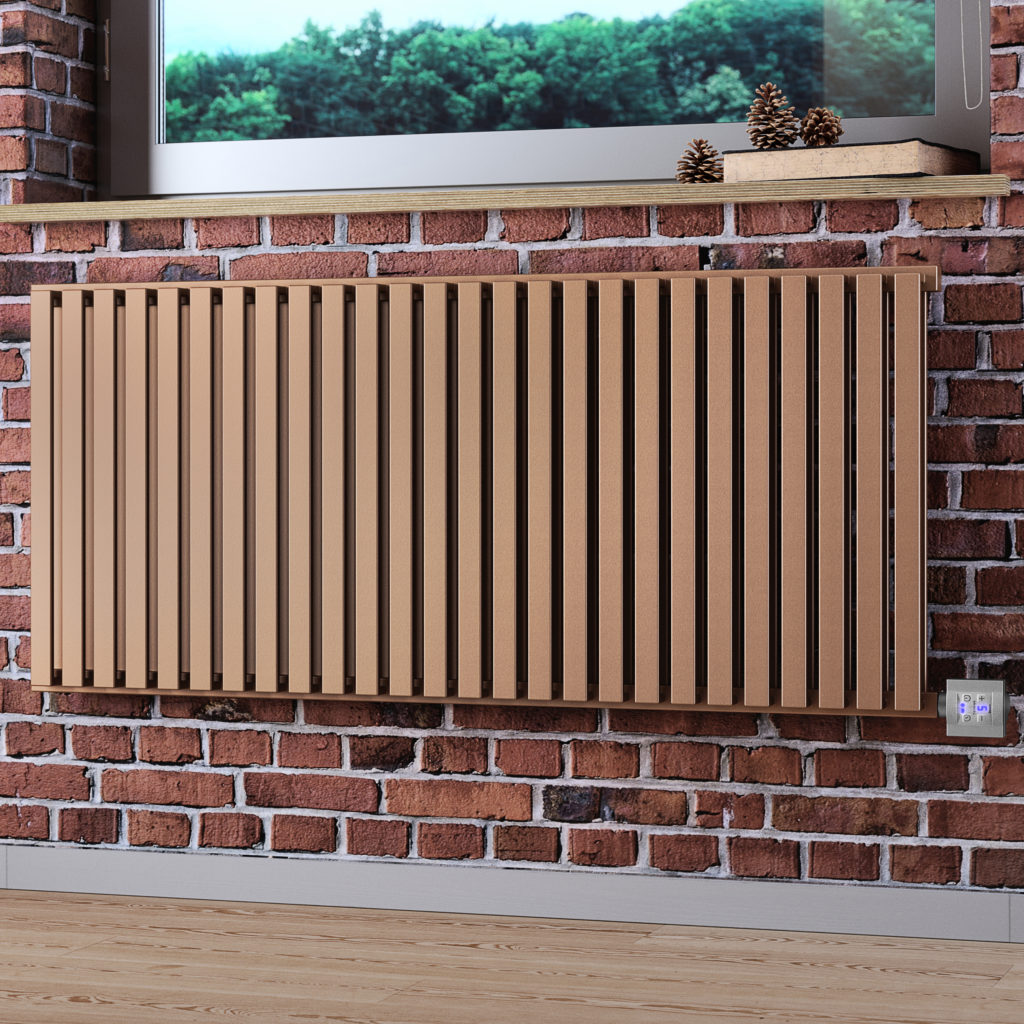2024’s Best Column Electric Radiators | Eco & Friendly Cost Now!
Best Column Electric Radiators 2024 | Eco-Friendly & Cost-Effective
Electric radiators can provide a convenient and economical way to heat your home. With the rising costs of energy and a greater awareness of our environmental impact, more people are considering electric radiators. This type of heater provides on-demand warmth while saving you money and reducing your home’s carbon footprint.

In this comprehensive guide, we’ll explore electric radiators, with a specific focus on column radiators. You’ll learn about the costs, energy efficiency, environmental benefits, installation, buying considerations, frequently asked questions, and more so you can determine if column electric radiators are the ideal home heating solution for you.
What Are Column Electric Radiators?
Column electric radiators are free-standing heaters that utilize electricity instead of central heating from a boiler. As the name suggests, these radiators have a tall and narrow column shape that makes them well-suited for placement along walls, in corners, and other out-of-the-way spots in your rooms.
Column electric radiators work similarly to traditional convection heaters, using an internal electric element to heat a fluid that’s encased in aluminium fins or columns inside the unit. These fins heat up and use natural convection, as hot air rises while cool air moves in to take its place, to transfer warmth into the surrounding space. They have built-in thermostats so you can control the exact room temperature you desire.
Compared to other electric heaters, column models have an extended surface area, as their shape features a taller and slimmer profile with multiple heating columns or fins. This offers more heating power and efficiency.
Now that you understand the basics of what a column electric radiator is, let’s explore why this specific type of electric heater could be a great choice for your home.
Cost Breakdown: Are Electric Radiators Affordable?
One of the biggest considerations when buying a heating system is the cost. Are electric radiators an affordable heating solution for your home?
Upfront costs for column electric radiators can range from approximately £100 to £500+, depending on factors like the heating power (measured in BTUs), size, brand, and style. However, this only reflects the initial purchasing price. For a true representation of affordability, you also need to consider:
- Operating and ownership costs
- Energy efficiency and running costs
- Installation expenses
- Maintenance needs and expenses
Taking all these elements into account provides a more complete cost breakdown. Let’s analyse each area to better understand how affordable column electric radiators are over the short and long terms.
Upfront Purchase Price
As previously mentioned, column electric radiators can range widely in initial purchasing price, approximately £100 to £500+ depending on the heating power, features, and style.
The higher the BTU rating, the more heating power the radiator provides and the larger the space it can warm effectively. More luxurious styles and advanced features like smart thermostatic control also increase the initial cost. Basic models start around £100 to £200, while you’ll pay more for premium versions with higher BTUs or more features, sometimes £300+ or more.
Operating Costs
Operating or running costs include your electric bills for powering the radiator over time. Electric heating tends to cost approximately 10-15 pence per kilowatt-hour (kWh), though energy prices fluctuate frequently.
At national average electricity rates, a 2000 watt (2 kW) column radiator operating for 8 hours each day for the 6 month UK heating season would cost approximately £52.80 to run annually. That comes out to about £8.80 per month.
However, the more energy-efficient the column radiator, the lower your electric bills will be. radiator energy efficiency is measured by its heat output compared to energy input, reflected by its Energy Related Product (ErP) rating, with A+++ being the most efficient and D the least.
Many modern electric radiators achieve ErP ratings of A or A+, making them about 25-40% more energy-efficient than older models. This translates into noticeably lower operating costs, saving you £13 to £21+ each year (£2 to £3.5 per month) compared to less efficient heaters.
Long-Term Ownership & Maintenance
A major benefit of an electric heating solution like radiators is the lack of major parts that require maintenance and eventual replacement. Without boilers, pipes, pumps, and other components, column radiators are simple in their construction with very few maintenance needs.
Basic upkeep like occasional dusting and vacuum cleaning is typically all that’s required for years of reliable operation. This makes them an very low-maintenance way to heat your home compared to gas or oil systems.
While electric radiators do contain some consumable parts like heating elements that degrade over extremely extended use, these components can last for over 20 years with average use. And replacements are inexpensive if eventually needed, unlike replacing an entire central heating boiler.
The minimal maintenance, simplicity of operation, and long lifetime translate into very low long term and lifetime ownership costs for electric column radiators.
Installation Costs
One benefit of column electric radiators is that installation is straightforward, minimizing labor costs. In most cases no special plumbing, gas lines, vents, or other complex connections are necessary like a wet central heating system requires.
For radiators with integrated electrical cables, simply plugging them into a dedicated outlet is often sufficient to get them up and running. At most, wiring them into your household electric may be preferred for a cleaner look. In total, full installation can be accomplished in as little as 30-60 minutes in many homes.
Average electrician installation costs range from approximately £75 to £250, varying based on your location and how many heaters you install, as well as if any electrical work is required. DIY installations may only cost you the price of the outlet and hardware if yours are existing and accessible.
Overall, installation expenses for column electric radiators tend to be low, saving you money compared to complex central heating systems in most homes.
Eco-Friendly & Energy Efficient: The Environmental Benefits
In addition to the attractive financial profile we just covered, column electric radiators also offer sustainability and eco-friendly operations that benefit the environment. This makes them a conscience-friendly option for homeowners concerned about their climate impact.
Energy Source
Electric radiators are only as clean and green as the energy source powering them – your local electric grid. Thankfully, grids worldwide are rapidly transitioning to renewable sources like solar, wind, and hydropower from fossil fuels.
The UK has made especially swift progress, with over 50% of its electricity now coming from clean energy instead of coal and natural gas. And grids are mandated to reach 100% zero-carbon power by 2035. This means electric radiators will progressively get greener in the years ahead.
Even today, choosing an electric heating solution over direct gas or oil burning immediately reduces your carbon emissions. And electric heat pumps offer even greater efficiency and emissions improvements. So electrifying your heating is one impactful eco-upgrade for your home.
High Efficiency Operation
We touched on this benefit briefly already, but the energy efficiency delivered by modern electric radiators makes them environmentally superior to older central heat systems.
While power plants are getting cleaner, cutting energy demand through efficiency still provides compounding carbon savings. ErP ratings indicate a product’s efficiency, with modern electric heaters rated A or A+, 25-40% more efficient than antiquated options.
Their smart controls also minimize energy waste by providing heat when and where you need it instead of constantly overheating unused rooms. And by using 100% of input energy for heating with no loss through pipes or vents, even more savings are achieved.
Over a central gas heating boiler, households can slash 1500+ kg of CO2 per year by upgrading to efficient electric heating solutions.
Thermostatic Control For Precision Comfort
All column electric radiators come equipped with integrated thermostatic control for accurately regulating your indoor temperatures. Using smart technology like electronic sensors and timers, these thermostats direct the radiator to turn off once the room hits your desired temp, saving power.
Without this precision control, heating systems operate blindly at full power. This wastes energy and results in uncomfortable temperature fluctuations. Thermostats solve this by automatically tuning heating output to match real-time needs.
Some advanced electric radiators even have WiFi connectivity or integrate with smart home platforms, giving you remote smartphone control and smart scheduling of each room’s heating for added energy savings.
Long Lifespans & Recyclability
The exceptional lifespan we covered in the cost section also benefits the environment by minimizing waste from replacing worn out heaters every few years. Properly maintained electric radiators can operate reliably for over 20 years thanks to a lack of moving parts and simple construction.
And when you are ready for an upgrade to a newer model, even after decades of use, electric radiators are fully recyclable at the end of their usable lives. Their aluminium and steel materials can easily be melted down and repurposed into new products, completing the sustainability cycle.
Why Choose Electric Column Radiators?
Now that you understand the cost savings and eco-friendly upside of electric heating, why choose free-standing column radiators specifically vs other styles?
Column radiators offer some unique benefits that make them an ideal choice for efficiently and discretely heating homes and apartments of all sizes.
Discreet, Stylish Heating
The tall and slim shape of column radiators gives them an low-profile aesthetic that discretely blends into corners and along walls, with a minimal footprint invading your interior space. This makes them perfect for heating small rooms, apartments and condos where floor area comes at a premium.
Their vertical orientation and small width can fit unobtrusively beside furniture, in narrow nooks, and in tight spaces where wider horizontal radiators just won’t work. This flexible placement means you can warm rooms efficiently without sacrificing your floor plan or decor.
And column models come in a range of neutral as well as eye-catching colors like black, silver, white and grey to match any style you desire, from modern and sleek to ornate and vintage. Their elongate silhouette even gives them a sculptural quality, letting them pull double duty as contemporary decorative pieces.
Effective Room Heating
In addition to offering versatile placement and styles, column radiators heat effectively and evenly thanks to their elongate shape and convection heating operation.
The multiple columns maximize heating surface area in a condensed footprint. And the shape encourages strong natural air currents that circulate warm air around your room. This leads to uniform heating wall-to-wall, eliminating cold spots that plague dated steam radiators.
Their slim profile also lets you position column radiators beneath windows to counteract cold drafts directly at the source for toasty warmth right where you want it.
Available in a range of BTU capacities to match rooms small and large, column electric radiators can heat any room just as well as bulkier horizontal radiators without hogging as much precious space.
Thermostatic Control For Precision Comfort
As we covered in the efficiency section, the smart integrated thermostatic control gives you precision temperature regulation. Instead of constantly running at max power, the radiator automatically turns off when your room hits the target temp you set.
This prevents energy waste from overheating, while ensuring every room stays at the exact comfortable temperature you want at all times, even as outdoor weather changes.
Some WiFi-connected column radiators even let you control each room’s temperature right from a smartphone for ultra-convenient comfort.
Zonal Heating Maximizes Energy Savings
One major advantage column radiators offer over central heating systems is zonal control. This means you can set custom temperatures in every room according to your needs instead of heating the entire home the same.
For example, you can set bedroom temperatures cooler at night while leaving living areas warmer. Or turn down unused rooms like guest bedrooms to save power until occupied. This selective room control further enhances energy savings.
Installation: Tips For Putting Up Your Radiator
Installing electric column radiators is a straightforward DIY project in most homes. But adhering to best practices during mounting ensures safe operation and optimal heating performance.
Mounting Location
- Position against exterior walls whenever possible to directly combat cold outdoor temperatures invading your home’s insulation.
- Below windows is ideal to counteract cold drafts at their highest concentration.
- Corner placement heats air most efficiently while leaving central floor space clear.
- Allow for airflow clearance of at least 150 mm above and 100 mm to sides.
- Keep out of direct sunlight to prevent internal fluid from overheating in extreme ambient temperatures.
Wall Mounted Radiator
- When securing to walls, use provided mounting bracket positioned at least 150 mm off the floor and 50 mm from walls for safety and airflow.
- Ensure mounting hardware enters a wall stud for stability. Toggle bolts provide reinforcement in hollow drywall if no stud available.
- Level perfectly to prevent rattling, uneven heating, and excessive vibration noise over time.
Height Considerations
- For rooms with standard 80″ interior doorways, radiators up to approximately 55″ tall easily fit during installation. Measure doorways to confirm.
- Exceeding door height makes moving units between rooms challenging. Either partially drain fluid to safely lay horizontally or use lifts.
Follow manufacturer instructions precisely for all mounting, filling, and preparation steps before first use for best outcomes.
Buying Considerations: How To Pick The Right Column Radiator
Several key factors determine how well a given column radiator will heat your space effectively. Consider the following criteria carefully when selecting a model to best match your room size, heating needs, and budget.
BTU Ratings & Heating Capacity
The central specification dictating heating ability is a radiator’s BTU rating. BTU stands for British Thermal Unit and describes the quantity of thermal energy transferred over time into a space. More BTUs equate to greater heating power.
Compare a room’s square footage against a radiator’s listed BTU rating to determine if it provides sufficient heating capacity needed. Column radiators meant for household use often range from approximately 2500 to 9000+ BTUs.
As a general BTU sizing guide per room:
- Small rooms under 160 sq ft: 2500-4000 BTUs
- Medium rooms 160-300 sq ft: 4000-6000 BTUs
- Large rooms 300+ sq ft: 6000+ BTUs
Incorrectly sized radiators cause inefficient heating. Undersized units run extensively without reaching target temps, wasting energy. Oversized heaters cycle on and off rapidly, creating temperature fluctuations and units wearing out quicker.
Consider room size, insulation, and exposure to cold outdoor air when selecting BTU ratings. Rooms with poor insulation or lots of windows require higher BTU models compared to interior, well-insulated spaces. Check manufacturer room size compatibility charts for exact recommendations.
ErP Efficiency Ratings
As outlined in the environment section earlier, a radiator’s ErP efficiency rating dramatically impacts annual energy costs and carbon footprint. When comparing heaters, prioritize models with “A” ratings for the most savings potential.
European regulations prohibit the manufacture of radiators below “D” rating for efficiency. So shop smart and avoid these subpar energy hogs still on the market while inventory remains.
Upgrading from an older “D”-range radiator to a modern “A” option provides up to 40% higher efficiency, paying back your purchase cost over a few years with energy savings.
Thermostatic Control & Timers
All decent column radiators include built-in thermostats for room temp precision. But advanced electronic thermostats offer tighter regulation. These detect subtle deviations faster, signaling units to turn off sooner when set temperatures are achieved. This prevents energy waste from overheating.
WiFi radiators now even allow controlling temperatures remotely from smartphones. And programmable timers let you schedule operating hours for further optimization and savings.
Consider a model with these smart enhancements for the ultimate in convenience and efficiency.
Frequently Asked Questions
Are electric radiators actually cheaper to run?
Yes, when comparing newer efficient electric models against older gas central heating systems, electric radiators like columns can be over 25% cheaper to operate thanks to superior efficiency ratings. And with power grids rapidly transitioning to renewable energy, electricity will only get greener and cheaper in the future.
How much does it cost to run a 2000 watt electric radiator per hour?
A 2000 watt (2kW) radiator running full blast for one hour consumes 2kWh. At average UK electricity rates around 15 pence per kWh, this equates to approximately 30 pence per hour to run a 2kW column radiator. Over 8 hours the daily cost totals around £2.40.
What size electric radiator do I need?
Select electric radiators sized proportionally to room square footage, with larger spaces needing more heating capacity reflected by higher BTU ratings. As a general guide:
- Small rooms under 160 sq ft: 2500-4000 BTUs
- Medium rooms 160-300 sq ft: 4000-6000 BTUs
- Large rooms 300+ sq ft: 6000+ BTUs
Refer to manufacturer room size compatibility charts to pick an appropriately scaled



